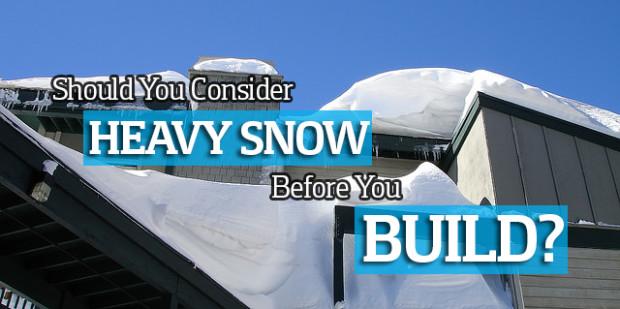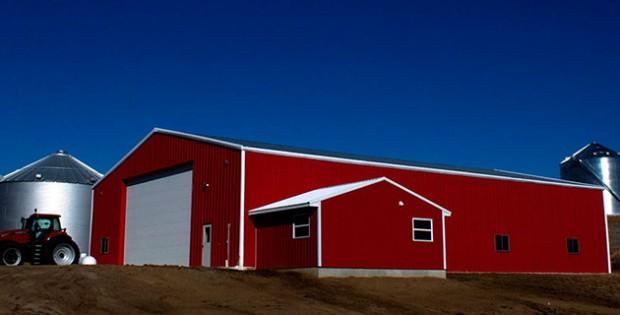Should You Consider Heavy Snow Before You Build?

For the most part, steel buildings aren’t at risk of failing because of a single or even multiple snow events; however, snow accumulation in excess of the intended building design could lead to structural failure or collapse if basic preventative measures are not taken. Keep in mind: all properly built roofs are intended to withstand a snow and ice load of a typical winter and then some. Roof failure due to snow loads can be related to several sources. When the actual snow load exceeds the design snow load, if drifting occurs or the erection was done poorly, there can be a building catastrophe. Remember, a snow load is only a portion of the total design load. Dead loads and wind loads are also factored into the design of the roof and building.
Take a moment to ask yourself a few questions: What does my steel building look like and am I at risk? What kind of rigid frame configuration do I have? The first step in answering these questions is to look at your design. Pay attention to the standard roof slope ratio. A metal building with a steep roof pitch tends to shed snow a lot quicker than other roofing materials. If the sun comes out on a winter day and melts the snow, the slippery smooth metal roof lets it fall right off. This is particularly true with a standing seam roof system.
Think about this: what determines snow loads on your roof isn’t the depth of snow – it’s the weight. So how much does snow weigh? On average, in most areas, 12-13 inches of snow is equal to about 1 inch of water. An inch of water or ice weighs approximately 5 pounds per square foot. For your convenience, our building drawings contain a reference table on the bottom right corner of your cover page. This has all the information and figures on when to start removing snow from your roof.
After a storm, you’ll be able to tell if a snow load is greater than the load-bearing capacity of the building. If there is sagging on the roof or a horizontal deflection of the walls, then there is a good potential for damage.
Here are some other warning signs of overstress due to a snow load:
- Sagging ceiling or metal members
- Popping and creaking noises
- Bowing trusses
- Doors or windows that cannot be opened/closed
- Severe roof leaks
So what do you do if you have too much snow on your roof? Well, you need to get rid of it, safely. The goal isn’t to remove every flake completely. You’re just looking to relieve the excessive load on the roof. To deal with snow and ice build up, a roof rake is an affordable option. The rake helps prevents ice dams and you can easily brush off the roof from the ground without damaging it. If all else fails, call a professional contractor to do the job.
It’s time to get ready for the winter. Depending on your location, it’s important to understand all the needs of your metal building and how to prevent potential problems.
Want more information like this? Check out the Steel Building Insider for more helpful tips and good reads.
Photo courtesy: Simmy’s Photography, Anita Ritenour« Steel Workshop Tool Review: Toro Power Max 724 OE Snow Blower
Giving Thanks & Giving Back: Thanksgiving Day Church Outreach Ideas »
Popular Posts

I’ve seen steel buildings increase in popularity every day because builders use these durable, versatile and flexible construction solutions in every application. Not only have homeowners utilized a steel building for residential purposes, but builders have also made additions to their existing property. No doubt that a steel building garage will increase the value of a home, …
Will Adding a Steel Building Increase My Property Value? Read More »

What is the first step of a steel building project, or any construction project for that matter? After you decide to add a new garage, agricultural or commercial building to your property, you’ll most likely start contacting steel building manufacturers for steel building quotes. From there, you can create a timeline for yourself and develop …
Steel Building Quotes: Get a Grasp on Prices and Estimates Read More »

